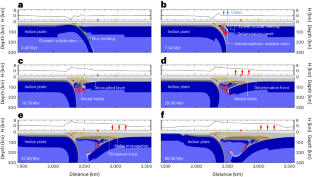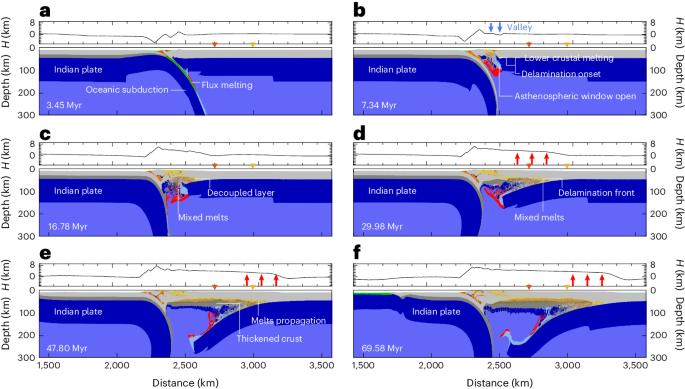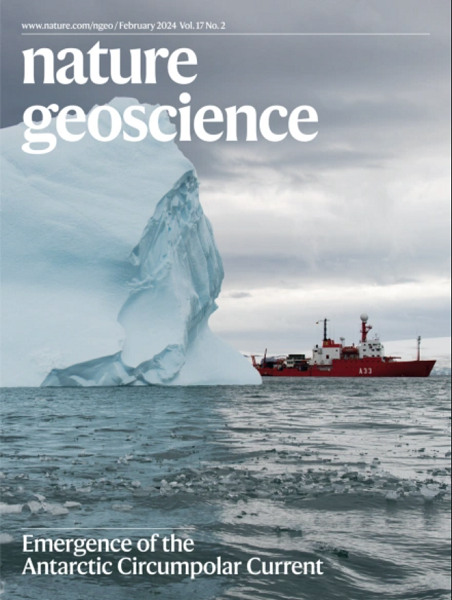青藏高原的崛起受控于凌空板块地幔分层
IF 15.7
1区 地球科学
Q1 GEOSCIENCES, MULTIDISCIPLINARY
引用次数: 0
摘要
高分辨率数值模拟显示,印度板块的俯冲作用剥离了青藏高原的地幔岩石圈。这一过程成功地解释了对青藏高原阶梯式增长、该地区岩浆迁移及其地震特性的一阶观测。本文章由计算机程序翻译,如有差异,请以英文原文为准。


The rise of the Tibetan Plateau was controlled by overriding plate mantle delamination
High-resolution numerical simulations show that subduction of the Indian plate peeled off the mantle lithosphere from the Tibetan Plateau. This process successfully explains first-order observations of the stepwise growth of the plateau, the migration of magmatism in the region and its seismic properties.
求助全文
通过发布文献求助,成功后即可免费获取论文全文。
去求助
来源期刊

Nature Geoscience
地学-地球科学综合
CiteScore
26.70
自引率
1.60%
发文量
187
审稿时长
3.3 months
期刊介绍:
Nature Geoscience is a monthly interdisciplinary journal that gathers top-tier research spanning Earth Sciences and related fields.
The journal covers all geoscience disciplines, including fieldwork, modeling, and theoretical studies.
Topics include atmospheric science, biogeochemistry, climate science, geobiology, geochemistry, geoinformatics, remote sensing, geology, geomagnetism, paleomagnetism, geomorphology, geophysics, glaciology, hydrology, limnology, mineralogy, oceanography, paleontology, paleoclimatology, paleoceanography, petrology, planetary science, seismology, space physics, tectonics, and volcanology.
Nature Geoscience upholds its commitment to publishing significant, high-quality Earth Sciences research through fair, rapid, and rigorous peer review, overseen by a team of full-time professional editors.
 求助内容:
求助内容: 应助结果提醒方式:
应助结果提醒方式:


